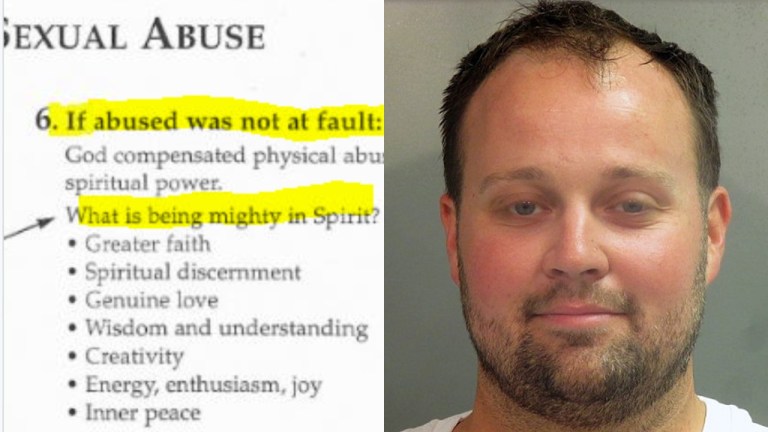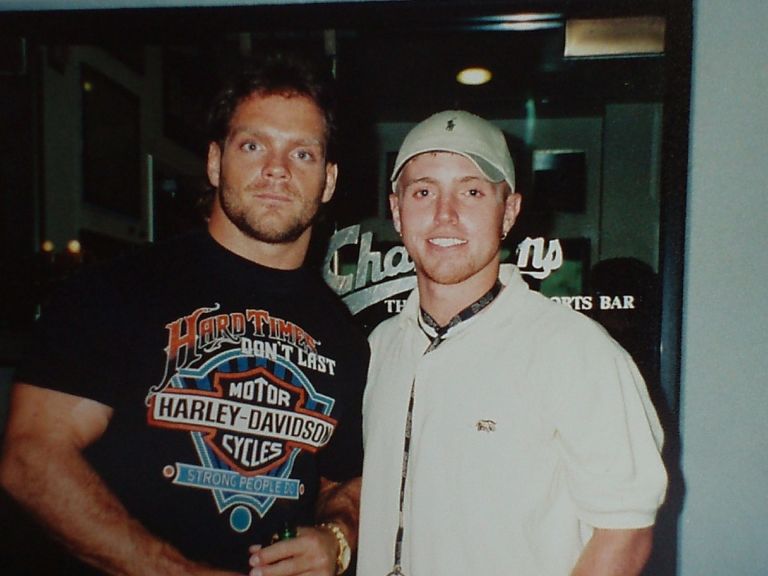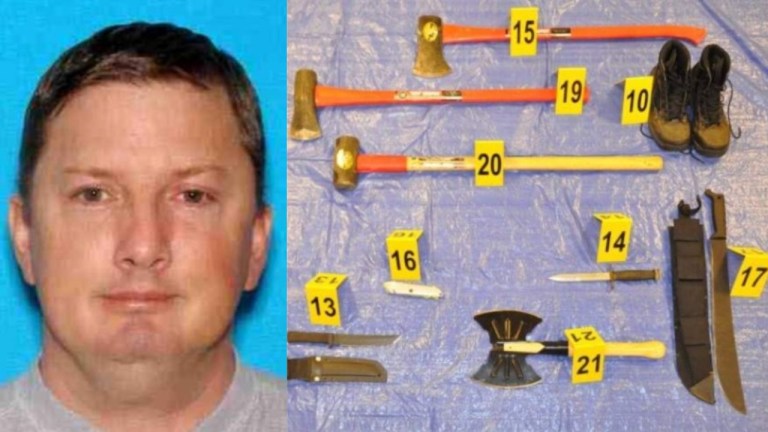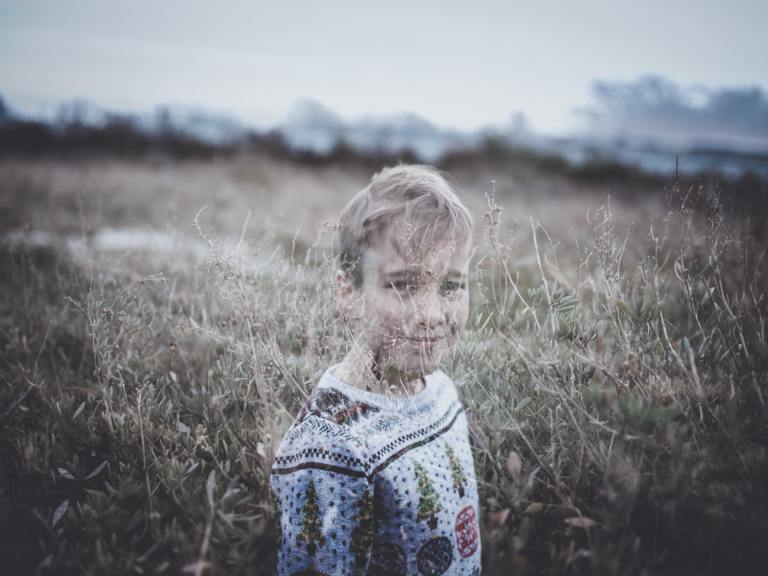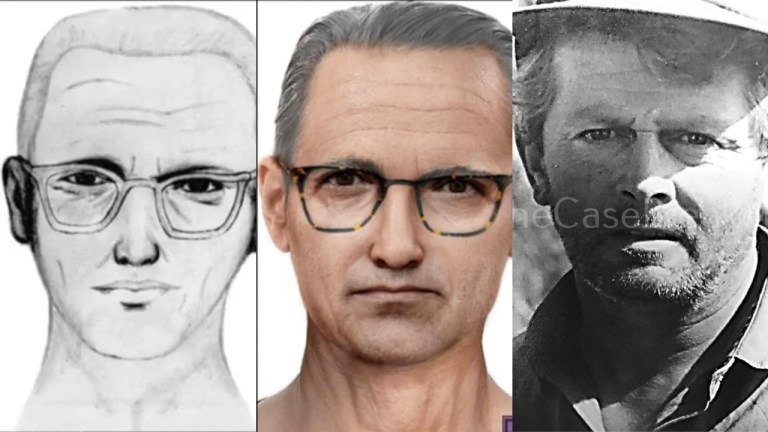Denial Is America’s Real Culture Problem
Talking about your issues is still considered taboo, ironic in a world where everyone’s kicks and kinks are so often flown up on display for everyone to see.
By J.G. Gingery

Author’s Note: I won’t even attempt to relate this years old article to race, as I am not qualified to speak on the matter. However, I encourage you to read this. It’s a different perspective and one worth considering. Race may have motivated the shooter’s target. But the failure of our culture and society to identify and help this troubled young human is what drove him to the darkest corners of his mind. What he did is unequivocally reprehensible, and justice will be done. But how did we get here? This world needs more love, not hate.

Exam: Interrupted
On the Washington Post’s website, there is a gripping opinion article under the title “Huddling in the Dark at AU.” The article was penned by an American University student who used the opportunity to connect an admittedly frightening non-event complete with helicopters (the University went into lockdown after someone reported an active shooter—It was an off duty security officer wearing an empty holster—much ado about nothing) to the litany of mass shootings that have taken place since Columbine. Now, I’m allowed to refer to American University’s lockdown as a “non-event” because, seven months prior, I lived through the same situation Ms. Messinger found herself in.
In May of this year, I was in the middle of my Abnormal Psychology final when our professor told us to stop the exam and turn on our phones. As our phones powered up, we quickly realized why our professor had given that directive. Southern Methodist University had ordered the campus into lock down: active shooter on campus, shelter in place. You know the drill. Perhaps it’s because I’ve spent my life around guns and with people who may have to use them for a living, but I found myself thinking of defensive strategies, not fixating on the possibility that I might become a victim. I noted that the lecture desk could be used to barricade the door by wedging it between the wall and the door knob, that the wall closest to the door provided a huge blind spot that the majority of the class could take cover behind, that even if the gunman was able to pry open the door, with the desk barricade, he would only have a line of sight and, therefore a line of fire towards the left 25% of the room. If he were to just reach in and fire blindly at the other 75%, he could be disarmed relatively easily, as my hardcover Abnormal Psychology textbook would have made an excellent makeshift truncheon. You may balk at that, but when you know that 43% of all active shooter attacks are over before the authorities even arrive, you can bet every last red cent you’ve got that I’m not going to cower under a desk and wait for the authorities to arrive.
Then the all clear came. Later we were informed that the alert was issued out of an abundance of caution when an unidentified man—who had called 911 to say he was going to commit suicide earlier that morning—had been tracked by his phone to University Blvd., on the other side of the 75 Expressway, easily half a mile away. I stopped thinking about how to defend the room, finished my exam, and continued to study for my other finals.
Some Uncomfortable Facts
Any security expert will tell you that security systems are never intended to stop the truly determined, just slow them down. In schools and elsewhere, the security safety net is supposed to be the guarantee of overwhelming police response to acts of gun violence, but when the individual or individuals in question have resolved to kill themselves and to take others with them, that safety net is rendered null. You are no safer from a determined shooter with a death wish than sheep in a pen would be safe from a starving wolf. Yes, the pen is supposed to keep the sheep nearby the farmer (who can better watch out for his flock from wolves;) but once a wolf enters the pen, the pen ceases to serve as a safe haven and instead becomes a kill box with no way out. The farmer may come running out with his gun once the sheep start bleating bloody murder, but it doesn’t change the fact that sheep were slaughtered in their pen before the farmer could shoot the wolf.
Newtown, Aurora, Columbine, the Navy Yard, Virginia Tech, Norway, all of those situations were instances in which the victims placed their trust and safety in the hands of the police. The same police officers that set up a secure perimeter before entering the hot zones, and the very police officers that have an average response time of around eight minutes (uniformed units, SWAT and Command centers take longer). When you take into account that two thirds of all shootings are over in the first 15 minutes, waiting for the cavalry doesn’t seem like such a great option anymore. The worst part is, that a shooter doesn’t need any of these guns we’ve been hearing the media decry as the scourge of modern society, these assault weapons. They don’t even need a handgun. Even with an antique 60 year old break action, double barreled shotgun with a straight stock (one round per barrel with no magazine; imagine Elmer Fudd’s gun, the same type of gun our Vice President recommended we all get in lieu of any other type of weapon for home defense) a determined shooter could easily squeeze off 100 shotgun rounds (50 reloads) before the authorities even arrived.

It was knowledge, not blind faith in the authorities that enabled me to remain calm and begin to formulate a defensive strategy during the lockdown, and I thank my lucky stars it didn’t have to be carried out. While the emotional turmoil Ms. Messinger found herself experiencing was very much real—several people in our exam were frightened to the point of tears as well—it speaks more to a fear of the unknown than to anything else. According to shelter in place protocols, in the event avoiding a shooter is impossible, you are supposed to fight back. If people are frightened so badly by guns that they cannot communicate during, and remain rattled for days after an active shooter lockdown by just their imaginations’ idea of a lone, crazed gunman in the vicinity, how can they be expected to defend themselves when that idea transforms into a terrifying, weapon brandishing reality?
Everyone knows guns are dangerous, but the majority of people’s knowledge of guns usually stops at that. This reason, I suspect, is why so many people want guns banned. Even the idea of arming and training teachers who volunteer to carry and act as an emergency line of defense has parts of the public up in arms. An assault weapons ban, the reasoning goes, would prevent mass shootings by making the weapons that much harder to obtain. Now, let’s say we did enact and enforce a wholesale assault weapons ban, what would it do? Would it end mass shootings? No, I don’t think it would. A truly determined shooter is exactly the type of person that everyone is afraid of, and whom these bans are attempting to limit the lethality of in the event they do start shooting. It may make assault weapons harder to acquire, but given the prevalence of black market weapons, a truly determined shooter could still acquire them. Heck, our government flat out just gave them to the Mexican cartels. And what about New York City and Chicago? Guns are illegal there, right? Everyone seems to be clamoring for assault weapons bans, but the fact remains that the aforementioned break action, double barreled straight stock shotgun would be totally exempt from that ban because what I am describing is an English style field gun. A gun whose principal design has remained almost wholly unchanged for the last century; the sort of gun like the ones featured in Lock Stock and Two Smoking Barrels, and if that’s too obscure a reference for you, it looks almost identical in shape and design to the antique break action rifle used by Daniel Craig in the final scenes of Skyfall, designed for shooting small game in the field, usually no bigger than a rugby ball.
Maybe it’s because assault weapons are always painted black; maybe it’s because people hear the word assault and instinctively imagine armed commandos—Orwell’s rough men—standing ready in the night to visit violence on those that would do us harm. Whatever the reason, we are collectively afraid of them enough that we designate entire areas as “gun free zones,” this designation from the same people who think that putting up signs declaring a drug free school zone will deter a pot dealer from selling dime bags to high school seniors during their second semester slump. Yet, it is exactly within these “safe zones” where the majority of the mass shootings have occurred.
Take the Navy Yard shooter, for example. He purchased and used a Remington 870 Pump action shotgun for his attack; yet another weapon nobody is trying to ban, because it doesn’t fit the current, and already fairly broad definition of “assault weapon”. He worked at the Navy Yard, and he knew that, despite the fact that it was a military facility no personnel other than the Military Police would be armed. Do you think he would have still carried out his attack had it been otherwise? It took local law enforcement eight minutes from the moment the first shots were fired to even enter the building. Roughly seventy minutes and many victims later on a United States Military facility, a United States Park Police officer neutralized the shooter. Re-read those last sentences, notice anything? No mention of military response to the shooter. Odd, considering the role of the military traditionally has been shooting people who are shooting back. Marines on scene had their weapons, but the ammo was kept separately under lock and key. Imagine how much quicker that shooting would have ended if the soldiers had had their weapons at the ready. As a father of a frustrated marine stated, “My son was at Marine Barracks—at the Navy Yard yesterday—and they had weapons with them, but they didn’t have ammunition. And they said, ‘We were trained, and if we had the ammunition, we could’ve cleared that building.’ Only three people had been shot at that time, and they could’ve stopped the rest of it.”
And what about the massacre in Norway, a country that has some of the strictest gun laws in the world? A country where 69 teenagers were ruthlessly hunted down and executed, and 110 more were wounded (55 critically) as they fled for their lives, just for their political affiliations. All the while the Norwegian police, also legislatively disarmed, waited impotently on the shore opposite the island for the officers that actually had guns to arrive; the specialized anti-terror unit. It would take an hour and a half from the moment the first shots were fired before the shooter was met with enough resistance to stop his rampage. It has often been said that the only thing needed for evil to triumph is for good men to stand by and do nothing. Or, in this case, for good men to keep their guns under so many safety systems so that an active shooter has carte blanche within their killing fields of choice.
You’ll notice that every perpetrator in these shootings was mentally disturbed in some way. Perhaps more importantly, is that whenever these monsters encountered what military and police would term “light resistance” in the form of small arms fire, they inevitably stopped killing defenseless people and turned their attention to the police responding. While the end result varied—they either turning their weapons on themselves, committed suicide by police action, or in the cases of Aurora and Norway, surrendered—it’s imperative to note that as soon as resistance was met, the shooter stopped engaging noncombatants. By the time this goes to print, almost all of you will have heard about how the most recent school shooting in Colorado was over in just eighty seconds. The shooter allegedly had 5 separate classrooms marked on his arm, as well as the phrase “Alea Iacta Est” Latin for “The die has been cast.” He certainly planned on joining the ranks of mass murderers. Below is an excerpt on the CNN report on the matter titled, rather appropriately, “Colorado’s School Shooting—Over in 80 seconds:”
‘We know for a fact that the shooter knew that the deputy was in the immediate area and, while the deputy was containing the shooter, the shooter took his own life.’ [The sheriff] praised the deputy’s response as ‘a critical element to the shooter’s decision’ to kill himself, and lauded his response to hearing gunshots. ‘He went to the thunder,’ he said. ‘He heard the noise of gunshot and, when many would run away from it, he ran toward it to make other people safe.’
Thankfully, the cavalry was already on site when the buckshot started flying. But will the people at the next one be as lucky? This is what the outcry against weapons is about, right? Protecting the innocent from the evil? Do you really think legislation against “assault weapons” will guarantee their safety? The Washington Times certainly doesn’t think so:
It was an armed deputy who stopped the Arapahoe High School gunman last week from unleashing a deadly massacre, not the expansive new gun control laws approved by Colorado Democrats in March in reaction to two mass shootings… That is the increasingly inescapable takeaway.
Which brings me to my title, I imagine it will cause some controversy, but it doesn’t change the fact of the matter. The lawmakers, and indeed, the general public have certainly decided that it is cheaper, easier, and much more sound bite friendly to focus on the visible and very, very loud guns than it is to focus on the mental conditions that, like a submarine, run deep and silent, evading detection before unleashing it’s deadly payload on the unsuspecting ships around it.
This is called denial. Specifically, to paraphrase denial as defined by Harvard Psychology professor Dr. George Vailliant: it is a refusal to accept external reality because it is too threatening; that is, arguing against an anxiety-provoking stimulus by stating it doesn’t exist; thus allowing a false resolution of emotional conflict and reduction of anxiety by refusing to perceive or consciously acknowledge the more unpleasant aspects of external reality. Or, to put it in layman’s terms, mentally unstable people wouldn’t harm anyone if they didn’t have access to guns.

Where does that leave people who need help? Broke and marginalized. Let’s take one of the more common serious psychological disorders and run the numbers—how about Major Depressive Disorder? (More commonly known in the vernacular as full-blown depression.) Treatment for this disorder usually involves a tandem dance of both therapy and antidepressants. The anti-depressant Wellbutrin XL, manufactured by drug giant GlaxoSmithKline, is among the most effective anti-depressants on the market. It also costs $437.00 for a thirty-day supply at its strongest dose. Even with the best insurance plan available, when you purchase from Costco (private plan, figures from affordable care act plans’ pricing are still unavailable.) This is because a generic version of the drug exists. The only caveat is that if you are unfortunate enough to get one of the generics that are under scrutiny, you may be taking a generic that can actually exacerbate your depressive symptoms, such as suicidal ideation and attempts. I don’t know about you, but, in this day and age, if I’m concerned enough to be going to a professional for help for depressive symptoms, and the professional determines that I would need the strongest dose that much smarter and better financed people than I could come up with, I certainly don’t want to gamble on the possibility that I may get worse. Further raising the odds in this game of Russian roulette is the fact that most pharmacies aren’t aware of the issues associated with the generic, or if they are, the evidence is still not overwhelming enough for insurers to stop demanding the generic be dispensed in lieu of the original. So where does that leave you if you’re depressed and strapped for cash? Well I guess you’ve got to ask yourself one question “Do I feel lucky?” Well, do ya, punk?
Let’s Run the Ballistics
For purposes of continuity, I’m going to be sticking with our depression example. The typical course of treatment with antidepressants is 6-12 months; so at its cheapest, the medication will cost you $2,622 (heaven forbid you’re bad enough off that you need the 12 month course, which will set you back $5,244.) That’s a lot of cash. In fact, that’s enough to purchase four Bushmaster AR-15s at any gun show (the semi-automatic version of the military’s standard issue assault rifle, the M16.) If, for the sake of savings—it is still a technically a recession, you know—we go down to the .22 caliber variants of the AR-15, you can buy ten or more. The .22 caliber, for those of you who are uninitiated in gun jargon, refers to the size of the projectile (bullet) the gun is chambered for; it’s about the size of a pencil eraser, which happens to be the smallest round the AR-15 has a variant for. It is used mostly for target shooting and varmint hunting due to its virtually nonexistent recoil (kick) and report (bang), which allows for not only increased accuracy, but also for more rounds to be placed on target in quick succession. Police, military and home defense versions of this round of course exist; variants known as high or hyper velocity rounds, and can be manufactured with a “hollow point” which mushrooms on impact therefore increasing the impact area and total trauma inflicted on the target. .22 caliber ammunition and magazines are incredibly easy to acquire, with virtually no restrictions and 2.5 billion rounds are produced worldwide, annually. A gun store—that will go unnamed off of route 29 in Virginia—will sell you a .22 semi-automatic AR-15 variant for $367. It will fire as fast as you can pull the trigger. If you throw in 100 rounds of police grade .22 hyper velocity hollow points and two ultra high capacity 50 round magazines, that would bring the total cost up to just about a one month supply of Wellbutrin XL 300mg.
Here’s another unsettling part, you don’t need a big caliber gun to do damage; a .22 will work just the same. All bigger caliber weapons do is make the shooter feel more lethal—and perhaps a little less inadequate about his manhood—yet a .22 high or hyper velocity hollow point round to center mass (heart, lungs) is just as deadly as a 9mm law enforcement round to someone not wearing body armor. Which, last time I checked, was everyone who wasn’t law enforcement or wearing it because of a previous death threat. One just makes a hell of a lot more noise, causes a much bigger mess, and becomes less accurate the faster you fire it. I’ll let you guess which.
Think about that. I mean really take a second to contemplate the ramifications of what I’ve just told you. Our national attitude towards mental health, and our mental health system itself, is so out of whack and out of focus that it’s cheaper to buy a gun than it is to get help—and, depending on where you live—infinitely more socially acceptable to boot, which is arguably the more appalling part. Mental illnesses can make financial and logical reasoning difficult, if not impossible, and now they’re hit with this dilemma. Spend a small fortune and give yourself a chance of getting back to health, or spend it on other things, guns, for example. As I’ve pointed out, that cash could buy you a lot of firepower, and since you’ve spent all of your fungible money on guns, you’re definitely not medicated and, therefore, are unstable. You can see where this is going.
It’s been a year since Newtown, seventeen months since Aurora, twenty-nine since Norway, and all I’ve heard the media ask about again and again is why we have this “gun culture,” as if it’s some terrible thing. It’s not. Look at Switzerland. Every citizen is drafted for one year of service, where they are trained on the proper use and care of their weapons, as well as in defensive and offensive tactics. At the end of their service, they get to keep the gun they were trained to use. They have one of the highest gun ownership rates in the world (this is because so many of them still have their military issued assault rifle), and—gasp—they have one of the world’s lowest gun crime rates. If the media demonization of guns rings true, one has to wonder how the hell that could be possible with so many assault rifles lying around in the hands of ordinary citizens. Yet, in the face of everything we’re being fed as truth, here stands a testament to the opposite. Leave it to the Swiss…
Perhaps instead of asking ourselves from our media pulpits about why we have this culture of gun violence, maybe we should begin asking ourselves why we don’t have a culture of mental health and wellness. Mental health issues are the most dangerous because they are the conditions that are unseen, often suffered silently in solitary anguish for fear of being branded as crazy or psychotic.
We in America have this “head in the sand” mentality towards mental illness. And it goes back to the fear of the unknown, because it’s something we cannot see and unless we are experiencing the disorders, could never really hope to understand. Think about it, what do you, the average citizen, know about schizophrenia? I’m willing to bet you only know of “schizo” as a pejorative term. Did you know that there are many different types of schizophrenia, that it can be brought on by extreme stress events in the form of “acute onset schizophrenia,” and that the most common form is paranoid schizophrenia? Or how about the fact that, despite the popular image, most paranoid schizophrenics aren’t violent, that they can recover completely, and many can reintegrate with society if provided the appropriate care and support? (That last part is important, it can, and often does, mean the difference between a lifetime of crippling difficulty or a second chance at normal.) Or that most depression cases, especially with respect to males, go untreated due to the stigma of reaching out for help? This becomes all the more troubling when you take into account the percentage of depressed, suicidal males who actually succeed. Think about that unidentified man from the beginning of this article that triggered SMU’s lockdown; who was being crushed under the combined weight of his demons, so much so that he saw suicide as his only way to escape them. The final, desperate cry for help from a broken man was misinterpreted as a threat to others and he was hunted down, tased, and arrested. He was “armed” with only a pocketknife.
What about our wounded warriors, and even those tortured souls who bear no physical wounds, but still bear the heavy cross of Post Traumatic Stress Disorder? Well, if TV and Media depictions of the disorder hold any sway, the average person would conjure a mental image of an unstable government-trained killing machine trying, unsuccessfully, to reintegrate back into civilian life, posing a threat not only to himself, but to others around him as well. That’s nothing more than a broad generalization and points more often to the exception than the rule.
Talking about your issues is still considered taboo, ironic in a world where everyone’s kicks and kinks are so often flown up on display for everyone to see. It seems to me, that by keeping our focus on guns instead of the mental health issues that spurred the shootings in the first place, we’re attempting to just treat a symptom, not cure the disease that caused it. Everyone knows a gun when they see it, but will you know if somebody is in need of psychiatric or psychological help when you see it? I’d bet my life’s fortune you wouldn’t. Nobody knew I did. ![]()
